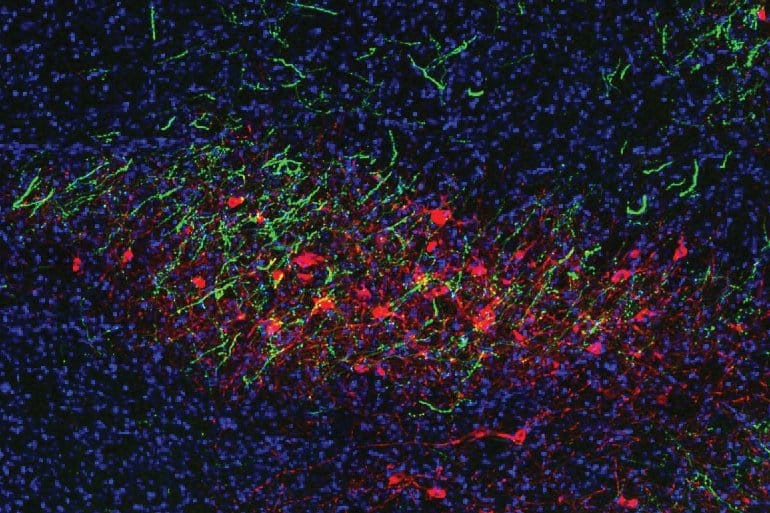Summary: Researchers implicate neurons in the anterior insula cortex as a driving force for motivation in the brain, according to a new mouse study.
Source: CSHL
A characteristic of depression is a lack of motivation. Cold Spring Harbor Laboratory (CSHL) Professor Bo Li, in collaboration with CSHL Adjunct Professor Z. Josh Huang, discovered a group of neurons in the mouse brain that influences the animal’s motivation to perform tasks for rewards.
Dialing up the activity of these neurons makes a mouse work faster or more vigorously—up to a point. These neurons have a feature that prevents the mouse from becoming addicted to the reward.
The findings may point to new therapeutic strategies for treating mental illnesses like depression that affect motivation in humans.
The anterior insular cortex is a region of the brain that plays a critical role in motivation. A set of neurons that activate a gene called Fezf2(Fezf2 neurons) in this area are active when mice are doing both physical and cognitive tasks. Li and his lab hypothesized that these neurons do not affect the mouse’s ability to do the task; rather, the brain cells influence the mouse’s motivational drive.
Mice were trained to lick a water bottle spout to receive a small sugar reward. When researchers dialed up the activity of these Fezf2 neurons, mice would lick more vigorously. If the neuron activity was dialed down, the mice would lick more slowly.
The researchers saw a similar result in another experiment in which the mice ran on a wheel to receive a reward. The mice ran faster if the Fezf2 neurons were stimulated. The same effect occurred with other tasks.

Li and his team were surprised to discover a feature that prevents the mice from becoming addicted to the tasks and their rewards. When mice drank their fill of sugar water and were satiated, they would not lick or run faster to get more sugar, even if the researchers dialed up the activity of the Fezf2 neurons.
Finding a way to fine-tune the human equivalent of these neurons might help people struggling with motivation due to mental illnesses like depression. Li says, “We want to selectively increase the motivation of the person so that they can do the things that they need to do, but we don’t want to create addictive drugs.”
About this neuroscience and motivation research news
Author: Press Office
Source: CSHL
Contact: Press Office – CSHL
Image: The image is credited to Li lab/CSHL, 2021
Original Research: Closed access.
“A genetically defined insula-brainstem circuit selectively controls motivational vigor” by Bo Li et al. Cell
Abstract
A genetically defined insula-brainstem circuit selectively controls motivational vigor
Highlights
- Neurons in the aICFezf2 → NTS circuit acquire anticipatory activity through learning
- The anticipatory activity encodes the perceived value and motivation
- aICFezf2 → NTS controls vigor, effort, and striatal dopamine release
- aICFezf2 → NTS function depends on both learning and homeostatic demand
Summary
The anterior insular cortex (aIC) plays a critical role in cognitive and motivational control of behavior, but the underlying neural mechanism remains elusive.
Here, we show that aIC neurons expressing Fezf2 (aICFezf2), which are the pyramidal tract neurons, signal motivational vigor and invigorate need-seeking behavior through projections to the brainstem nucleus tractus solitarii (NTS). aICFezf2 neurons and their postsynaptic NTS neurons acquire anticipatory activity through learning, which encodes the perceived value and the vigor of actions to pursue homeostatic needs.
Correspondingly, aIC → NTS circuit activity controls vigor, effort, and striatal dopamine release but only if the action is learned and the outcome is needed. Notably, aICFezf2 neurons do not represent taste or valence. Moreover, aIC → NTS activity neither drives reinforcement nor influences total consumption.
These results pinpoint specific functions of aIC → NTS circuit for selectively controlling motivational vigor and suggest that motivation is subserved, in part, by aIC’s top-down regulation of dopamine signaling.







